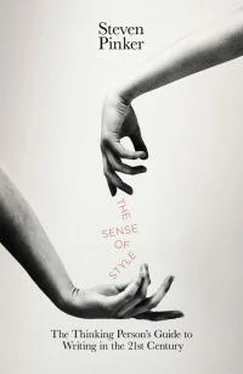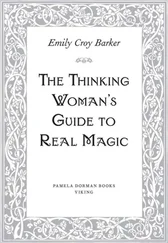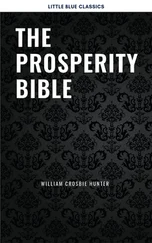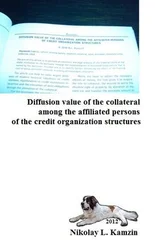Those temporal modifiers all have something to do with cold weather, and that is also a deliberate choice. The new information in each sentence is about how the herons react to cold weather. So in each of these sentences, some aspect of cold weather (mentioned in the modifier at the beginning) sets the stage for an announcement of what herons do about it (mentioned in the main clause that follows). Given always precedes new.
In the second paragraph, cold weather takes its turn on the stage as a topic in its own right. The transition is orderly. The switch of topic is announced in the penultimate sentence of the first paragraph ( Spending the winter here has its advantages ), and it is maintained consistently in the second, where two of the sentences have cold things as their subjects, and the other two have them in complements to There is, which are like subjects. We have a second arc of coherence spanning the text, which links all the manifestations of cold weather.
The arc linking the sentences about herons and the arc linking the sentences about cold weather are two instances of what Williams calls topic strings: they keep the reader focused on a single topic as he proceeds from sentence to sentence. Let’s turn now to another arc of coherence, which connects the different appearances of an entity on the reader’s mental stage as they come and go over the course of a passage.
The noun system of English provides a writer with ways to distinguish entities the reader is being introduced to for the first time from the entities he already knows about. This is the major distinction between the indefinite article, a, and the definite article, the . 6When a character makes his first appearance on stage, he is introduced with a. When we are subsequently told about him, we already know who he is, and he is mentioned with the:
An Englishman, a Frenchman, and a Jew are sitting in a doctor’s waiting room and each is told he has twenty-four hours to live. They are asked how they plan to spend their final day. The Englishman says, “I’m going to my club to smoke my pipe, sip some sherry, and chat with the blokes.” The Frenchman says, “I’m going to call my mistress for a sumptuous dinner, a bottle of the finest wine, and a night of passionate lovemaking.” The Jew says, “I’m going to see another doctor.”
A (or an ) and the are not the only way that the English language distinguishes indefinite from definite nouns. Indefinite plurals and mass nouns can be introduced with the article some ( Some mud was on the floor; Some marbles were on the floor ), and they can also appear without an article at all ( Mud was on the floor; Marbles were on the floor ). Definiteness can be marked by other th- words such as this, that, these, and those, or with a genitive noun, as in Claire’s knee or Jerry’s kids.
The distinction between a first appearance on stage and subsequent appearances can also be marked by the use of names or indefinite nouns on the one hand and pronouns on the other. Pronouns such as he, she, they, and it do more than save keystrokes. They tell the reader, “You’ve already met this guy; no need to stop and think about a new kid in town.”
Stanley Goldfarb died and his relatives and the congregation gathered for an evening of prayers and mourning. When the time came for the mourners to come up and eulogize him, no one stirred. After several minutes, the rabbi was getting anxious. “Someone must have something nice to say about him,” he implored. More silence. Finally a voice piped up from the back of the room: “His brother was worse.”
Helping a reader keep track of the entities that make repeated appearances in a text is a tricky business. Repeating a name or an indefinite noun can confuse readers by making them think that someone new has walked onto the stage. 7(Imagine Stanley Goldfarb died and Stanley Goldfarb’s relatives gathered for an evening of mourning. ) On the other hand, if new characters walk into the scene in the interim, or enough time has passed that the first entrance is a distant memory, a pronoun or definite noun can leave them wondering who the he or the man is. Bloopers make the danger plain: 8
Guilt, vengeance, and bitterness can be emotionally destructive to you and your children. You must get rid of them.
After Governor Baldwin watched the lion perform, he was taken to Main Street and fed 25 pounds of raw meat in front of the Cross Keys Theater.
The driver had a narrow escape, as a broken board penetrated his cabin and just missed his head. This had to be removed before he could be released.
My mother wants to have the dog’s tail operated on again, and if it doesn’t heal this time, she’ll have to be put away.
Now let’s go back to the herons and see how O’Connor refers to them. He introduces them with an indefinite noun phrase: Great Blue Herons live. Now that they are on stage, he switches to a definite noun phrase: the herons head. At this point he wants to refer to a subset of those herons, so he introduces just these ones with the indefinite article: A few come to Cape Cod. He refers to that subset a second time, and so it’s time to switch back to the definite: Most of these herons. Then he makes a rare slip: he tells us that herons —indefinite—can avoid the dangers of migration. Since these are herons he introduced us to a few sentences ago, the ones who stop in Cape Cod rather than continuing farther south, I say it should be The herons or These herons.
After the interlude of the paragraph whose topic is winter, which introduces yet another subset of herons (the hypothetical ones who aren’t booking a return trip), we need a reset, and so it’s indefinite Herons again; on next mention they can safely be identified with the pronoun they. The kitten-eating heron is different from the rest, and he’s introduced with indefinite One hungry heron, followed by a reference back to the little-bird-eating herons; we’ve already met them, so they’re the herons, their identity further pinpointed by a reduced relative clause [that were] eating small birds.
Pay attention as well to what O’Connor does not do as he repeatedly refers to the herons. Other than shifting from Great Blue Herons to herons, he doesn’t strain for new ways of referring to the birds. The herons are herons; they don’t turn into Ardea herodias, long-legged waders, azure airborne avians, or sapphire sentinels of the skies. Many style experts warn against the compulsion to name things with different words when they are mentioned multiple times. Henry Fowler, author of Modern English Usage (next to Strunk and White, the most influential style manual of the twentieth century), sarcastically stigmatized the practice as “elegant variation.” Theodore Bernstein called it monologophobia, the fear of using the same word twice, and synonymomania, the “compulsion to call a spade successively a garden implement and an earth-turning tool .” Newspaper editors sometimes warn their writers that if they obey the opposing guideline “Don’t use a word twice on one page” they are likely to slip into journalese, peppering their prose with words that journalists use but that people never say, such as the nouns blaze, eatery , moniker, vehicle, slaying, and white stuff (snow), and the verbs pen , quaff , slate, laud, boast (have), and sport (wear).
In fairness to journalists and other synonymomaniacs, there are times when a writer really does need to avoid repeating words in close succession. Take the second sentence in the preceding paragraph, in which I switched from herons to birds. The alternative would have been “Other than shifting from Great Blue Herons to herons, he doesn’t strain for new ways of referring to the herons.” That third “herons” is clunky, even confusing, for the same reason that repeating the name Stanley Goldfarb in the funeral joke would have been confusing. Or consider the sentence from the Wikipedia entry on Oedipus: The baby, he says, was given to him by another shepherd from the Laius household, who had been told to get rid of the child. The entry uses “the child” because a second mention of “the baby” would not have worked. When a noun is repeated in quick succession, readers may assume that the second mention refers to a different individual and fruitlessly scan the stage for him. They do this because the natural way to refer to an individual a second time is with a pronoun, the word that signals, “You know who this guy is.” But sometimes a pronoun doesn’t work—in the Oedipus sentence, get rid of him would have left it unclear who him was referring to—and in that case a generic definite noun phrase like the child or the birds can serve as an honorary pronoun.
Читать дальше












